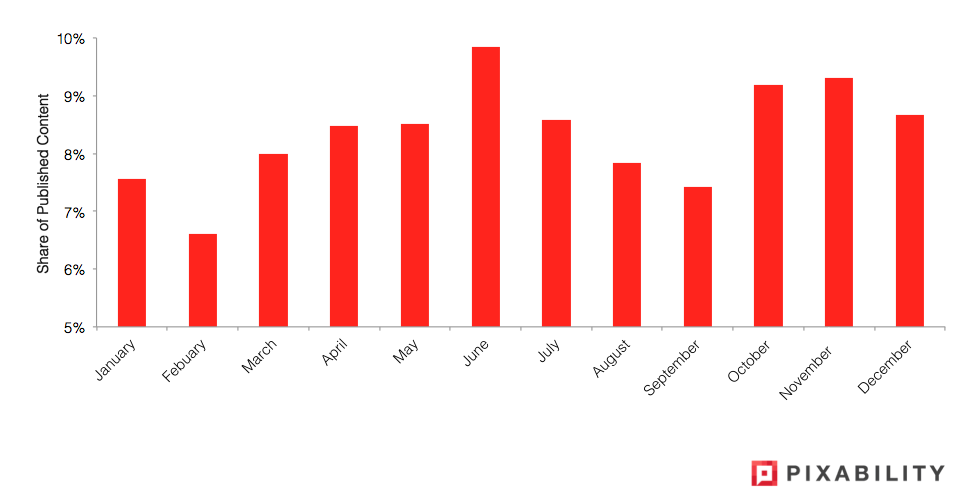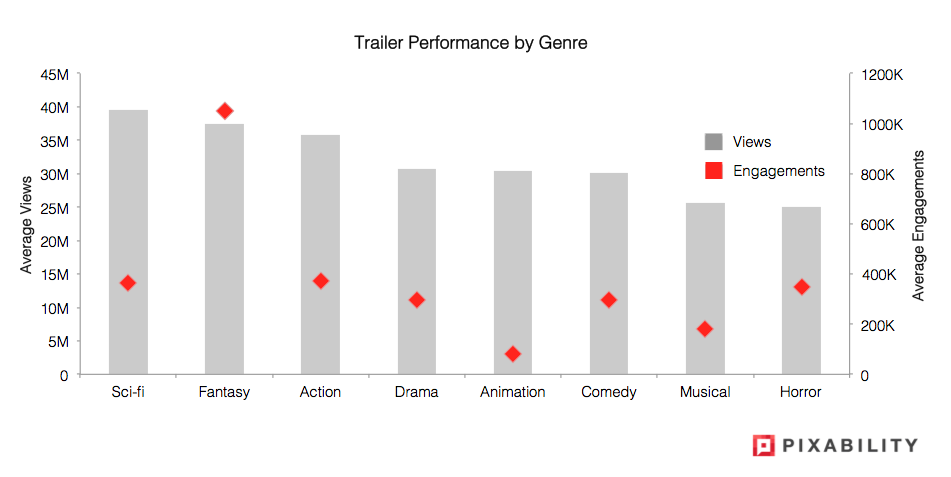The Movie Scoop on YouTube
Just in time for the Oscars, we tapped our software to analyze the movie space on YouTube and see what’s resonating most with viewers. We looked at all content related to movies, including trailers, clips, and reviews, which have amassed 235B total views, 1.2B likes, and 660M social shares. Our analysis coincides with YouTube’s release of a special edition Oscars Leaderboard, which ranks how fans engaged with the eight best picture nominees on YouTube. Highlights from Pixability’s analysis include:
Publishing Peaks. Publishing of movie content peaks on YouTube during the summer blockbuster and holiday seasons. Users turn to YouTube during these popular movie release seasons to find, create, and share content.
 Fans Love Action. Of the top movie content on YouTube (the top 100 videos on US-based channels, measured by total views), action content is the most prevalent genre, owning 40 percent of top content, followed by animation with 25 percent and Sci-Fi with 13 percent of content.
Fans Love Action. Of the top movie content on YouTube (the top 100 videos on US-based channels, measured by total views), action content is the most prevalent genre, owning 40 percent of top content, followed by animation with 25 percent and Sci-Fi with 13 percent of content.
Trailers Rule. Of the top movie content on YouTube, trailers are by far the most popular content type, owning 89 percent of top content. Movie clips trail with 10 percent content share, followed by movie reviews with only 1 percent.
Fantasy Wins Fans’ Hearts. While Sci-Fi trailers earn the most views on average (39M), followed by Fantasy (37M) and Action trailers (35M), users overwhelmingly choose to engage with Fantasy trailers (1M avg. engagements). Action trailers rank second with 732K average engagements.
 Studios & Creators Push Play. Trailers published by studios earn more than 36M views and 354K engagements on average. The momentum is further fueled by trailers published on creator channels (all non-studio channels that re-upload movie clips and trailers) which earn 31M views and 268K engagements on average.
Studios & Creators Push Play. Trailers published by studios earn more than 36M views and 354K engagements on average. The momentum is further fueled by trailers published on creator channels (all non-studio channels that re-upload movie clips and trailers) which earn 31M views and 268K engagements on average.
That’s a wrap. Check out how this year’s blockbusters stack up in YouTube’s special edition Oscars Leaderboard here. To learn about how your brand and industry performs on YouTube, contact us today.
*Data represents all-time global data as of Feb. 17, 2016